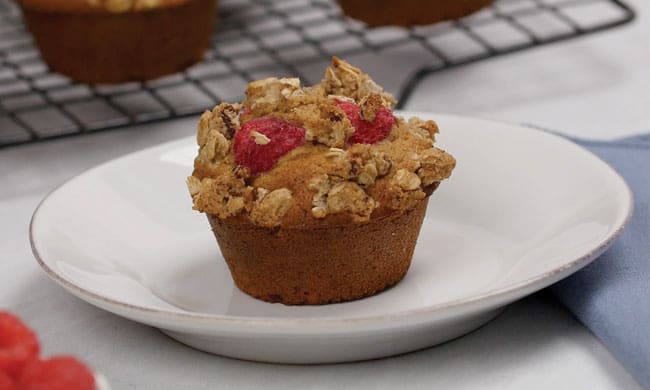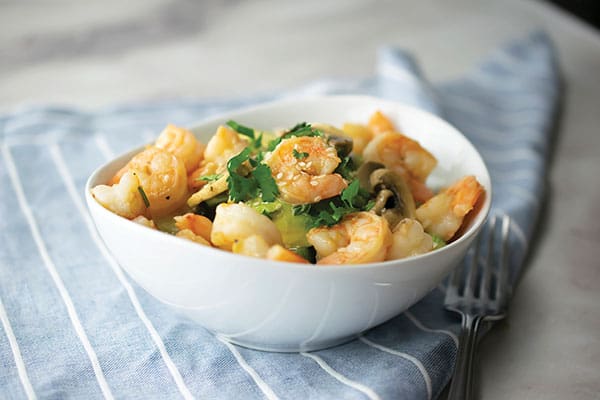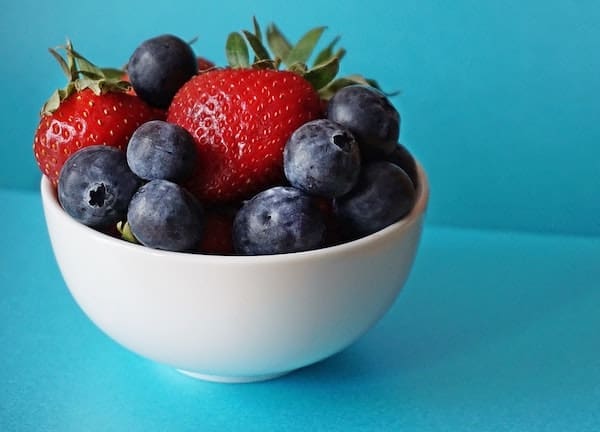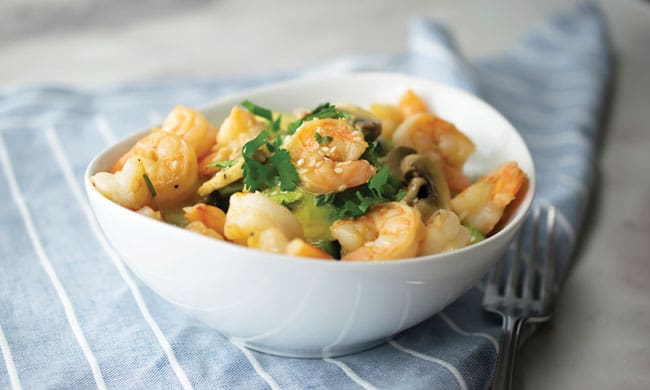
Senior Centers in San Antonio
A Comprehensive Overview for Local Elderly Residents

A Comprehensive Overview for Local Elderly Residents

One way to level up the nutritional value of your meals is to better understand whole grains and why they are important for a heart-healthy diet.

Photo by Ella Olsson
As we age, our nutritional needs change, and it becomes increasingly important to maintain a healthy diet to support our overall health and well-being. Eating a balanced diet can help seniors maintain a healthy weight, reduce the risk of chronic diseases, and improve their mental and physical health. However, many seniors face challenges in maintaining a healthy diet due to factors such as limited mobility, financial constraints, and changes in appetite.
To address these challenges, it is important to understand the unique nutritional needs of aging adults and to develop healthy eating habits that work for each individual. This article will provide tips and strategies for seniors to maintain a healthy diet and overcome common barriers to healthy eating. From choosing nutrient-dense foods to creating a meal plan that works for your lifestyle, we will explore practical ways to improve your diet and support your overall health and well-being.
Understanding the Unique Nutritional Needs of Aging Adults
As we age, our bodies undergo changes that can affect our nutritional needs. Understanding these changes is key to maintaining good health and preventing age-related diseases. Here are some unique nutritional needs of aging adults:
Fewer Calories
As we age, our metabolism slows down, and we tend to be less active. This means that we require fewer calories to maintain a healthy weight. However, it’s important to note that our nutrient needs remain the same or may even increase with age.
More Nutrients
Aging adults require more of certain nutrients, such as calcium, vitamin D, and vitamin B12. These nutrients are essential for maintaining bone health, preventing cognitive decline, and reducing the risk of chronic diseases.
Adequate Protein
Protein is essential for maintaining muscle mass and strength, which can decline with age. Aging adults should aim to consume at least 1.2 grams of protein per kilogram of body weight per day.
Hydration
As we age, our sense of thirst may decline, which can put us at risk of dehydration. It’s important for aging adults to drink plenty of fluids, especially water, throughout the day.
Fiber
Fiber is important for maintaining digestive health and reducing the risk of chronic diseases. Aging adults should aim to consume at least 25 grams of fiber per day.
Reduced Sodium
Aging adults are often advised to reduce their sodium intake to help prevent high blood pressure and other cardiovascular diseases. It’s recommended that aging adults consume no more than 1,500 milligrams of sodium per day.
By understanding the unique nutritional needs of aging adults, we can make informed choices about our diets and maintain good health as we age.
The Importance of Protein in Senior Nutrition
Protein is a crucial nutrient for seniors as it plays an essential role in maintaining muscle mass and strength. As we age, our bodies lose muscle mass, which can lead to frailty and an increased risk of falls and injuries. However, consuming enough protein can help slow down this process and maintain muscle mass.
According to the National Institute on Aging, older adults should aim to consume at least 1 to 1.2 grams of protein per kilogram of body weight per day. This means that a 150-pound senior should aim to consume between 68 and 82 grams of protein per day.
Protein is found in a variety of foods, including meat, poultry, fish, eggs, dairy products, beans, peas, and lentils. It is important for seniors to consume a variety of protein-rich foods to ensure they are getting all the necessary amino acids their bodies need.
In addition to maintaining muscle mass, protein also plays a role in supporting the immune system, wound healing, and maintaining healthy skin and hair. Therefore, it is important for older adults to consume enough protein to support these essential bodily functions.
It is also important to note that not all protein sources are created equal. For example, red meat is high in protein but can also be high in saturated fat, which can increase the risk of heart disease. Seniors should aim to consume lean protein sources, such as poultry, fish, beans, and lentils, to avoid excess saturated fat and promote heart health.
Overall, consuming enough protein is crucial for seniors to maintain muscle mass, support bodily functions, and promote overall health. By incorporating a variety of protein-rich foods into their diets, seniors can ensure they are getting all the necessary nutrients their bodies need.
Healthy Eating Habits for Aging Adults
As we age, our bodies undergo many changes, and our nutritional needs change as well. It is important for aging adults to maintain a healthy diet to support their overall health and well-being. Here are some healthy eating habits that aging adults can adopt:
Make Smart Food Choices
Choose a variety of nutrient-dense foods that are rich in vitamins, minerals, and fiber. Whole grains, fruits, vegetables, lean proteins, and low-fat dairy products are all excellent choices. Avoid processed foods, sugary drinks, and foods high in saturated and trans fats.
Plan Ahead
Planning ahead can help you make healthier food choices. Plan your meals and snacks in advance, and make a grocery list to ensure that you have the ingredients you need on hand. When eating out, look at the menu ahead of time and choose healthier options.
Stay Hydrated
Drinking enough water is crucial for overall health, especially as we age. Aim to drink at least 8-10 glasses of water a day, and limit sugary drinks and alcohol.
Practice Portion Control
As we age, our metabolism slows down, and we may need fewer calories. Practice portion control by using smaller plates, measuring your food, and avoiding oversized portions.
Seek Professional Advice
If you have specific health concerns or dietary restrictions, seek advice from a registered dietitian or healthcare professional. They can help you create a personalized eating plan that meets your unique needs.
In conclusion, adopting healthy eating habits is essential for aging adults to maintain optimal health and well-being. By making smart food choices, planning ahead, staying hydrated, practicing portion control, and seeking professional advice, aging adults can enjoy a healthy and balanced diet.
Meal Planning and Preparation for Older Adults
Meal planning and preparation can be challenging for older adults, but it is an essential part of maintaining a healthy diet. Here are some tips to make meal planning and preparation easier:
Plan Ahead
Planning ahead is essential for meal planning and preparation. Decide on the meals you want to make for the week and create a shopping list. This will help you avoid unnecessary trips to the grocery store and ensure that you have all the ingredients you need.
Cook in Bulk
Cooking in bulk is a great way to save time and ensure that you have healthy meals on hand. Consider making a large batch of soup, stew, or casserole and freezing it in individual portions. This will make it easy to reheat a healthy meal when you don’t feel like cooking.
Use Simple Recipes
Simple recipes are often the best for older adults. Look for recipes that are easy to follow and require minimal preparation. Consider investing in a slow cooker or pressure cooker, which can make meal preparation even easier.
Make it Social
Meal preparation can be a social activity. Consider inviting friends or family members over to help you prepare meals. This can make the process more enjoyable and provide an opportunity for social interaction.
Get Creative
Meal planning and preparation can be an opportunity to get creative in the kitchen. Look for new recipes to try and experiment with different ingredients. This can help keep meals interesting and prevent boredom with your diet.
In summary, meal planning and preparation are essential for maintaining a healthy diet as you age. By planning ahead, cooking in bulk, using simple recipes, making it social, and getting creative, you can make meal preparation easier and more enjoyable.
Physical Activity and Nutrition
Physical activity and nutrition are two important aspects of healthy aging. As we age, our bodies require fewer calories, but we still need to consume nutrient-dense foods to maintain our health. Eating a balanced diet and staying physically active can help older adults maintain their energy levels, balance, and body weight.
Regular physical activity is essential for maintaining an active lifestyle and overall fitness. It can help improve cardiovascular health, strengthen bones and muscles, and reduce the risk of chronic diseases. Older adults should aim for at least 150 minutes of moderate-intensity aerobic activity per week, such as brisk walking, cycling, or swimming. They should also engage in muscle-strengthening activities, such as lifting weights or using resistance bands, at least two days per week.
In addition to physical activity, nutrition plays a crucial role in healthy aging. Older adults should aim to consume a variety of nutrient-dense foods, including fruits, vegetables, whole grains, lean proteins, and low-fat dairy products. They should also limit their intake of saturated and trans fats, added sugars, and sodium.
To maintain a healthy weight, older adults should aim to balance their caloric intake with their energy expenditure. They can achieve this by consuming fewer calories or increasing their physical activity levels. A registered dietitian can help older adults develop a personalized meal plan that meets their unique nutritional needs.
Overall, staying physically active and maintaining a healthy diet can help older adults maintain their health and independence as they age. By making small changes to their lifestyle, such as taking daily walks or swapping out unhealthy snacks for healthier options, they can improve their overall well-being and quality of life.
Food Safety for Aging Adults
Food safety is important for everyone, but it is especially important for aging adults. As we age, our immune system weakens, making us more susceptible to foodborne illnesses. Here are some tips to help ensure food safety for aging adults:
Wash your hands: Always wash your hands before handling food to prevent the spread of harmful bacteria. Use warm water and soap, and scrub for at least 20 seconds.
Clean your kitchen: Keep your kitchen clean and free of bacteria. Use hot, soapy water to clean all surfaces, including countertops, cutting boards, and utensils.
Separate raw and cooked foods: Keep raw meat, poultry, and seafood separate from cooked foods to prevent cross-contamination. Use separate cutting boards and utensils for raw and cooked foods.
Cook food to the right temperature: Use a food thermometer to make sure that meat, poultry, and seafood are cooked to the right temperature. The USDA recommends cooking beef, pork, lamb, and veal to an internal temperature of 145°F, and poultry to an internal temperature of 165°F.
Refrigerate leftovers promptly: Refrigerate or freeze leftovers within two hours of cooking to prevent the growth of harmful bacteria.
Be careful with high-risk foods: Some foods are more likely to cause foodborne illness than others. High-risk foods include raw or undercooked meat, poultry, and seafood, as well as unpasteurized dairy products and raw sprouts.
By following these food safety tips, aging adults can reduce their risk of foodborne illness and stay healthy. For more information on food safety, visit foodsafety.gov.
Chronic Diseases and Nutrition
As we age, we become more susceptible to chronic diseases such as diabetes, heart disease, high blood pressure, osteoporosis, and cancer. Nutrition plays a crucial role in preventing and managing these conditions.
Diabetes
For individuals with diabetes, it is important to monitor their carbohydrate intake and choose foods that have a low glycemic index. Foods with a low glycemic index cause a slower rise in blood sugar levels, which can help with managing diabetes. Some examples of low glycemic index foods include non-starchy vegetables, whole grains, and legumes.
Heart Disease and High Blood Pressure
A heart-healthy diet can help reduce the risk of heart disease and high blood pressure. This includes limiting saturated and trans fats, sodium, and added sugars. Instead, opt for foods that are high in fiber, such as fruits, vegetables, and whole grains. Foods that are rich in omega-3 fatty acids, such as fatty fish, nuts, and seeds, can also be beneficial for heart health.
Osteoporosis
Calcium and vitamin D are essential nutrients for bone health and can help prevent osteoporosis. Good sources of calcium include dairy products, leafy green vegetables, and fortified foods such as tofu and orange juice. Vitamin D can be obtained through exposure to sunlight and through foods such as fatty fish, egg yolks, and fortified foods.
Cancer
While there is no single food or nutrient that can prevent cancer, a healthy diet can help reduce the risk of developing cancer. Eating a variety of fruits, vegetables, whole grains, and lean proteins can provide the body with the nutrients it needs to function properly and maintain a healthy immune system. It is also important to limit consumption of processed and red meats, as well as alcohol.
In conclusion, nutrition plays a critical role in preventing and managing chronic diseases in aging adults. By making informed food choices and following a healthy eating pattern, individuals can improve their overall health and reduce the risk of developing chronic conditions.
Dietary Guidelines and Resources for Aging Adults
As aging adults, it is important to follow dietary guidelines to maintain good health. The Dietary Guidelines for Americans recommend consuming a variety of nutrient-dense foods while limiting added sugars, saturated fats, and sodium.
The USDA’s MyPlate resource is a helpful tool for planning balanced meals. It recommends filling half of your plate with fruits and vegetables, one quarter with lean protein, and one quarter with whole grains. Additionally, the National Institute on Aging provides a variety of resources on healthy eating for older adults, including tips for shopping, cooking, and eating out.
For those who are struggling to afford healthy food, the Supplemental Nutrition Assistance Program (SNAP) provides assistance to eligible individuals and families. The Food and Nutrition Service offers educational resources on how to apply for SNAP and make the most of your benefits.
In addition to following dietary guidelines and utilizing resources, it is important to listen to your body’s hunger and fullness cues. As we age, our metabolism slows down and our nutrient needs may change, so it is important to pay attention to how our bodies respond to different foods.
Overall, by following dietary guidelines, utilizing resources, and listening to our bodies, aging adults can maintain good health through healthy eating habits.
Conclusion
In conclusion, healthy eating is crucial for aging adults to maintain their health and well-being. As we age, our bodies undergo changes that require us to adjust our diets to meet our nutritional needs. By following the Dietary Guidelines for Americans and incorporating a variety of nutrient-dense foods into their diets, seniors can maintain their health and prevent chronic diseases.
Some key takeaways for seniors to consider when planning their meals include:
Eating a variety of fruits and vegetables to ensure they are getting enough vitamins and minerals.
Choosing lean protein sources, such as fish and poultry, to maintain muscle mass and prevent muscle loss.
Limiting added sugars, saturated fats, and sodium to prevent chronic diseases such as heart disease, diabetes, and high blood pressure.
Staying hydrated by drinking plenty of water and choosing healthy beverages such as unsweetened tea or low-fat milk.
It’s important for seniors to talk to their healthcare provider or a registered dietitian if they have any questions or concerns about their diet. They can also discuss the use of dietary supplements to ensure they are getting the recommended daily intake of certain nutrients such as vitamin B12.
By making small changes to their diets and incorporating healthy eating habits, seniors can improve their overall health and quality of life.

(Family Features) From salads and snacks to breakfast, lunch and dinner, rounding out a full menu of healthy meals shouldn’t be a chore. In fact, you can still enjoy your favorite flavors and tickle your taste buds with nutritious recipes that capitalize on powerful ingredients you actually want to eat.
A fruit-forward breakfast is a nutritious way to start your morning, and a fresh twist on pasta salad can make lunches or your evening side an enjoyable way to stay on track. Bowls filled with grains, veggies and a favorite protein are all the rage, and this seafood-fueled version is no exception when you’re craving a combination of your personal favorites.
Take your better-for-you eating plan from bland and boring to delightfully delicious by visiting Culinary.net for more recipe inspiration.
Eat Smart with Seafood
No matter if you’re searching for a healthy family dinner, a quick lunch at home or an easy idea to meal prep for the week ahead, these Orange Shrimp Quinoa Bowls are perfect for seafood lovers who also enjoy a hint of spice. Fresh, healthy and full of deliciously prepared shrimp, these bowls are also loaded with mushrooms, peppers and cucumbers.
The homemade sauce is light with a sweet yet spicy vibe. Resting over a cup of steamy quinoa for a filling base of healthy grains, it’s a quick and easy recipe you can customize with favorite toppings like sesame seeds and cilantro.
Find more wholesome, health-forward recipes at Culinary.net.
Orange Shrimp Quinoa Bowls
Servings: 2
1 cup quinoa
1 cup orange juice
1 tablespoon hot sauce
1 tablespoon honey
1 tablespoon soy sauce
4 tablespoons vegetable oil
1 tablespoon lime juice
1 tablespoon white miso
1 1/2 pounds shrimp, peeled, deveined and tails removed
1/4 cup butter
1/4 teaspoon salt
1/8 teaspoon pepper
1 cup mushrooms, sliced
1 red bell pepper, diced
1 cucumber, sliced into half moons
5 green onions, sliced
1 avocado, sliced
1 teaspoon sesame seeds
2 tablespoons cilantro, chopped
Cook quinoa according to package instructions. Set aside.
In medium bowl, whisk orange juice, hot sauce, honey, soy sauce, vegetable oil, lime juice and miso until combined. Pour 1/4 of liquid into separate bowl. Set aside.
Add shrimp to remaining mixture and marinate 15 minutes.
Heat large skillet over medium heat with butter. Add shrimp, salt and pepper. Cook 2 minutes on each side until pink. Add mushrooms and cook until tender.
In two serving bowls, divide quinoa, bell pepper, cucumber, onions, avocado and shrimp. Sprinkle sesame seeds and cilantro over both bowls.
Drizzle with reserved dressing.
Start the New Year with a Savory Salad
Starting the new year with fresh intentions, whether you’re trying to reset for 2023 or simply add more greens to your meals, begins with delicious, nutritious and easy recipes.
With more than 100 varieties of fresh, healthy and convenient ready-to-eat salads, Fresh Express provides plenty of inspiration, information and incentives to help you achieve your goals. For example, this Pesto Pasta Salad features red lentil rotini and Twisted Pesto Caesar Chopped Salad Kits loaded with a fresh blend of crisp iceberg and green leaf lettuces, crunchy garlic brioche croutons, Parmesan cheese and creamy pesto dressing. Add fresh grape tomatoes and toasted walnuts for a simple side or easy lunch that can be made ahead of time.
Discover more fresh recipe ideas at FreshExpress.com.
Pesto Pasta Salad
Prep time: 15 minutesCook time: 10 minutesServings: 6
1 quart cooked red lentil rotini
2 packages (9 1/2 ounces each) Fresh Express Twisted Pesto Caesar Chopped Salad Kits
1/2 teaspoon salt 1/4 teaspoon black pepper
1 cup grape tomatoes, halved
1/2 cup walnuts, toasted
Prepare red lentil rotini according to package directions; cool 15 minutes.
In bowl, mix rotini and one dressing packet from salad kits. Sprinkle with salt and pepper; mix well. Refrigerate, covered, 30 minutes, or until rotini is cold.
In large bowl, mix lettuce from both salad kits with remaining salad dressing package. Add rotini and tomatoes; toss to combine. Sprinkle with garlic brioche croutons and shredded Parmesan cheese from salad kits and walnuts.
Substitution: Traditional rotini can be used for red lentil rotini.
A Fruity Twist on Breakfast
Whether it’s a weekend celebration or a simple morning bite on the go, it’s often said breakfast is the most important meal. Starting off your day with some fruity nutrition is a sweet way to add vitamin C to your diet without skimping on flavor.
With a tasty granola crust and yogurt filling, this Brunch Fruit Tart is an easy way to impress guests or fuel your morning at the office. Balanced and easy to make, the crunchy crust and smooth center make it an enjoyable addition to at-home menus. This version calls for strawberries, blueberries and kiwi, but you can get creative with your own favorite fruits for a different flavor each time you make it.
Visit Culinary.net to find more nutritious breakfast ideas.
Brunch Fruit Tart
Recipe adapted from homemadeinterest.com
Crust:
4 cups granola mixture
1/2 cup butter, softened
4 1/2 tablespoons honey
nonstick cooking spray
Filling:
2 1/4 cups vanilla Greek yogurt
8 ounces cream cheese, softened
1/2 cup granulated sugar
1 teaspoon vanilla extract
1 package gelatin
Toppings:
strawberries, sliced
blueberries
kiwis, sliced
To make crust: Preheat oven to 350 F.
In large bowl, combine granola, butter and honey. Grease 11-inch tart pan with nonstick cooking spray. Line bottom of tart pan with parchment paper.
Press granola mixture into tart pan. Place tart pan on baking sheet and bake 10 minutes. Cool completely.
To make filling: Using mixer, combine yogurt, cream cheese, sugar, vanilla extract and gelatin until whipped completely.
Pour yogurt mixture into tart crust. Refrigerate at least 1 hour.
Top with strawberries, blueberries and kiwis.
SOURCE:Fresh Express

As we age, it is essential to nourish our bodies with the right food to fight against illnesses and infections that come with age. Our immune system usually weakens as we grow old, making us prone to diseases. Fortunately, there are various foods packed with immune-boosting nutrients that can help maintain our body’s defense mechanism. In this blog post, we have rounded up the top 10 foods that you can easily find and incorporate into your diet to help support a healthy immune system.
Photo by Suzy Hazelwood from Pexels
1. Berries
Blueberries, strawberries, raspberries- they all contain high-loaded antioxidants that reduce the risk of infections and inflammation. Adding these to your morning cereal or smoothie bowl can ramp up your immunity.
Photo by Karolina Grabowska
2. Garlic
Garlic is a powerful immune booster with strong antiviral and antibacterial properties. It contains over 100 sulfur compounds, which help in reducing blood pressure and cholesterol levels. Raw garlic in soups or salads is the best way to consume this herb.
Photo by ROMAN ODINTSOV
3. Citrus Fruits
Citrus fruits like oranges, grapefruits, and lemons are packed with Vitamin C, which is crucial to boost our immune system. They also contain flavonoids that help protect against cancer and cardiovascular diseases.
Photo by Pixabay
4. Ginger
For centuries, ginger has been used as a medicinal herb for its anti-inflammatory and anti-nausea properties. It can be consumed either in fresh or powdered form, in tea or stir-fry dishes.
Photo by Any Lane
5. Yogurt
Yogurt is a probiotic-rich food that helps balance our gut bacteria, helping to improve digestion and immune function. Because of its versatility, it can be added to several dishes as a condiment.
Photo by Alesia Kozik
6. Nuts/Seeds
Nuts and seeds like almonds, walnuts, and sunflower seeds are high in vitamin E, an antioxidant known for absorbing cell-damaging free radicals, promoting cell growth, and lowering the risk of chronic diseases.
Photo by Pixabay
7. Leafy Greens
Leafy greens like Spinach, kale or collard greens, are a great source of vitamins A, C, E, and K. They also contain antioxidants and anti-inflammatory components that strengthen our immune system.
Photo by Karl Solano
8. Turmeric
A natural anti-inflammatory, this spice has been found to reduce pain and swelling in some seniors. It is also a powerful antioxidant and may help with cognitive decline. Consult your doctor before taking any supplements or using turmeric as an alternative medicine.
Photo by ready made
9. Omega 3’s
Omega 3 fatty acids have been shown to reduce inflammation and improve heart health in seniors. Omega 3 can be found in certain fish, nuts, and vegetable oils. It is important for older adults to get enough of this beneficial nutrient in their diet. Eating foods rich in omega 3 or taking a daily supplement can help maintain good health as you age.
Photo by Madison Inouye
9. Squash
Squash such as pumpkin and butternut squash are high in Vitamin A, which is essential in protecting against the flu and boosting our immune system.
Photo by Pixabay
10. Dark Chocolate
Lastly, dark chocolate containing at least 70% cocoa solids is an excellent choice to help ward off illnesses. It is rich in antioxidants, flavonoids, and theobromine, all of which have anti-inflammatory properties. A small piece of dark chocolate as a dessert is a good idea.
In conclusion, our body is our temple, and we must feed it with the right nutrients it needs, especially as we age. Incorporating these 10 foods into our daily diet can contribute to a healthy immune system, keeping us in good health long-term. Remember, eating well isn’t just food for the body; it’s food for the soul.
